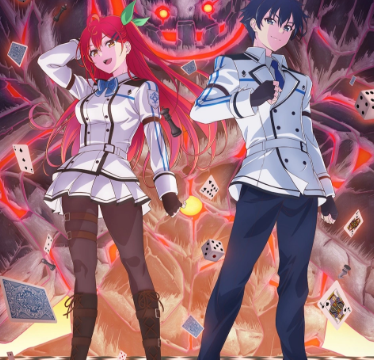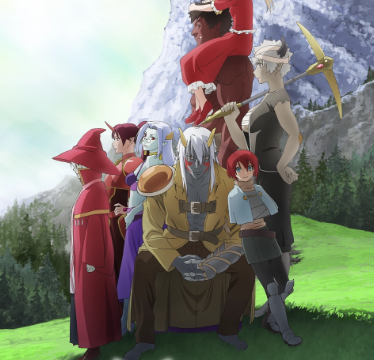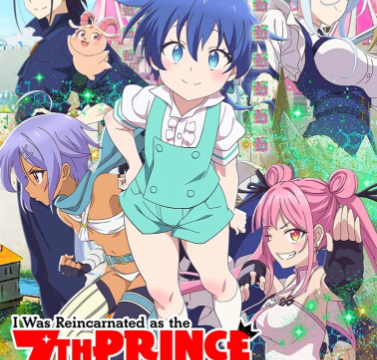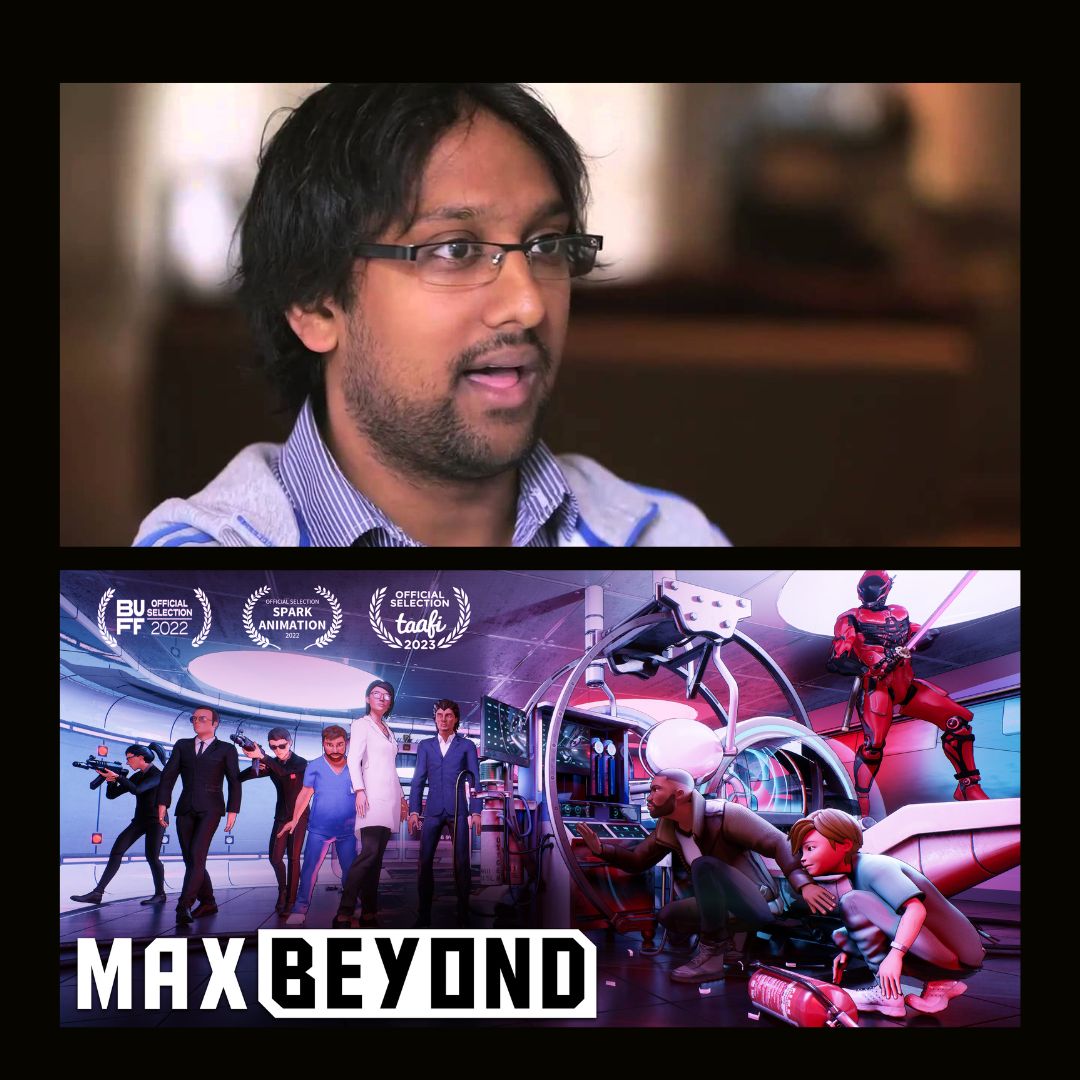Season Review: Smiling Friends Season One (Episodes 2-8)
Overview:
From career revivals, to unrequited romances, to gritty murder mysteries, the Smiling Friends have their work cut out for them when it comes to their eternal mission to spread joy to the disenfranchised. Pim, Charlie, Glep, and the entire Smiling Friend crew get pulled in many different directions over the course of this season whenever they hear their call. The Smiling Friends might often act like no case of malaise is too heavy to take on, but some progressively taxing clients help them learn a lot about humanity–as well as themselves. The Smiling Friends are literally prepared to go to hell and back to turn those frowns upside down and the show’s first season highlights the heights of their dedication.
Our Take:
There’s so much to be said for a show that creates a distinct and unique world for itself, and right out of the gate there’s exceptional world building done on the part of Smiling Friends that’s achieved through character designs and the goals that drive characters rather than dry exposition. It’s shocking how much of a show’s tone can get conveyed simply through an extremely strange character or an individual who speaks in their own garbled language. It’s highly similar to the absurdist universe that’s present in Michael Cusack’s other Adult Swim series, YOLO: Crystal Fantasy, but the presence of Zach Hadel allows even more chaos to reign and it makes Smiling Friends such a well-defined series that feels fully formed right out of the box.
“Mr.Frog” to “Charlie Dies and Doesn’t Come Back” all reflect relatively comparable stories that give a good impression of how a standard Smiling Friends episode functions, but they still display contrasting sensibilities that highlight the series’ diverse skills rather than being content to just hammer down the same weird joke. It’s one of the strongest debut seasons to an Adult Swim animated series in a long time and it hits the ground running with the feeling of a show’s sophomore year where it’s already worked out the freshman kinks.
All of these episodes–whether it’s intentional or accidental–remain true to the series’ governing premise where the Smiling Friends crew set out to brighten the lives of some sad sacks, much like the direction that was taken in the show’s stealth April Fool’s pilot episode, “Desmond’s Day Out.” Many episodes of Smiling Friends begin with comparable origin points, but they end up in very unique places. Smiling Friends pulls off a difficult feat wherein simple storylines are juxtaposed with wild characters that bombard the audience with sprawling monologues and heavy doses of crazy that practically beg the audience to change the channel or otherwise get overwhelmed with the tidal wave of nonsense.
There are so many scenes in Smiling Friends that just happen and the viewer is left in a dazed state, unsure exactly what just took place, or why, but it’s always entertaining. Cute life lessons and playful adages are immediately serviced up with sudden bursts of violence. The series even makes heavy use of live-action sequences and radical stop-motion creatures that fully destabilize the audience and leave them unsure of what’s next. It all speaks to the staunch confidence and clear voice that Cusack and Hadel bring to the series. While Smiling Friends firmly exists in its own universe, it’s also not afraid to feature real celebrities, like Jimmy Fallon, and allow reality to get blurred with all of this madcap madness instead of creating its own Smiling Friends equivalencies. It adds even more flavor to the show’s world.
At no moment does Smiling Friends ever attempt to explain itself or give context for what’s going on and it’s instead content to leave the viewer confused as characters transition into the next scene. That’s not to say that Smiling Friends is just empty chaos that can’t build a narrative or service actual character development. There’s still a tender earnestness to the main characters in the series, especially since they’re driven by a pure desire to spread happiness and friendship, and as hackneyed as this may come across at times it makes a real difference and is meant to be sincere.
These episodes are full of adventure and they both cover a lot of ground, but they’re also not empty when it comes to their larger messages. The first entry, “Mr. Frog,” engages in cancel culture commentary and the dangers of overbearing paparazzi, which becomes surprisingly prescient, even if it’s expressed through the most absurd of circumstances. The whole “Mr. Frog Show” storyline also explores how corporate machines can recast iconic roles until they no longer mean anything. These cherished heroes become nothing more than tools to drive consumerism and corporate symbols rather than whatever the original actor actually cared about and represented with their work. They become a forgotten cog in a never-ending machine, which is quite deep territory for an 11-minute dose of nonsense like Smiling Friends to successfully cover.
Contrast the existential identity crisis that’s suffered in “Mr. Frog” with the larger messages about the hollow nature of destiny that’s present in the fantasy-lampooning, “Enchanted Forest,” or what “Who Violently Murdered Simon S. Salty?” and “Charlie Dies And Doesn’t Come Back” both have to say about the fears and comforts that surround death. These weird, passionate stories reflect the full spectrum of Smiling Friends’ talents. It absolutely feels like a journey has happened and that these disparate episodes have actually been a culmination of ideas by the end of the season.
It may seem silly to overanalyze the different members of the Smiling Friends team, but the rabid amount of fan art that’s already been generated over these figures speaks to how they’ve deeply connected with their audience. At a first glance, none of these critters seem to be overly complicated, but this handful of episodes effectively demonstrates the different extremes that Charlie and Pim occupy, even though their goals are often the same. Pim often leans into romantic optimism whereas Charlie is considerably more grounded and realistic (which he ultimately has to reckon with in “Charlie Dies and Doesn’t Come Back”). It’s helpful to see these contrasting sides of the Smiling Friends team get established so early and then receive further development. They feel like four different united members and not just some group that operates through a hive mind. It takes all sorts to make a rainbow.
Another satisfying touch that’s present in Smiling Friends is that it’s full of jokes that lampoon the very nature of television and this medium’s form. There are clever riffs on the use of pointless catchphrases or text message-based contests to vote on new characters. This wanton disregard for normalcy was also present in YOLO: Crystal Fantasy as that show would gleefully break the fourth wall. However, this feels even more natural in Smiling Friends as the series begins to poke fun at the hoops television is sometimes forced to jump through (typically when it comes to marketing gimmicks). The audience doesn’t get any “normal” grace period and instead these heightened touches playfully mock the episodes right from the start of Smiling Friends.
Smiling Friends is a concise enough show with a small cast of characters that it’d be easy for each episode to just feature one large storyline where everyone is involved. It’s an advantage that episodes contain compelling B-stories that feed into the main narrative and lead to more successful pacing. It’s entirely understandable when Adult Swim’s quarter-hour series only feature one dominant storyline, but Smiling Friends benefits from splitting up its characters and demonstrating their individual strengths and weaknesses, which is the right approach for this odd show’s first season.
Smiling Friends’ greatest asset at this point is its bizarre sense of humor that drives forward the dialogue and storytelling, but the show’s colorful and unusual animation aesthetic also represents a major part of the show’s vibe. A lot of Smiling Friends’ creations are content with simplicity, but other entities are drawn with intricate care to accentuate a gross degree of realism. Smiling Friends recklessly fluctuates between these simplistic lo-fi drawings and extremely detailed sketches with stylized lighting and camera angles, which compliment the animated series’ unpredictable charm. They even manage to pull off a Halloween special that’s legitimately frightening when it comes to its use of jump scares and intimidating monster designs. It’s hardly necessary, but it’s indicative of Smiling Friends’ consistent commitment to the bit.
The small taste of Smiling Friends that audiences got back in April set very high expectations for what was to come in the proper series, but the quality of this collection of episodes should not leave audiences disappointed. Hopefully this stealth season drop and Adult Swim’s two episodes-a-week strategy doesn’t mean that Smiling Friends quickly fades into obscurity. It deserves the chance to build a larger audience and not just disappear before anybody can learn that it exists. These episodes represent the hilarious start to a brave new world that has the potential to be one of Adult Swim’s biggest series of the next decade.


























Hi Ashley, thank you so much for reading and we love the feedback. Note that on that day we had 14th posts go up and only ten posts show on the front page, so it's possible the preview had already been archived by the time you got to it. One recommendation would be to add our RSS feed to your favorite news aggregator service like Feedly, this way you get all of the latest posts!